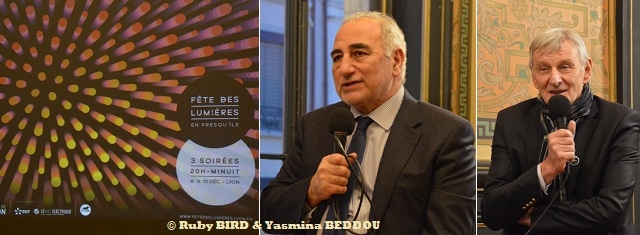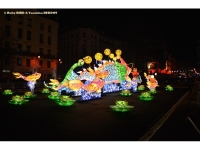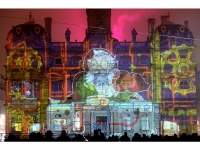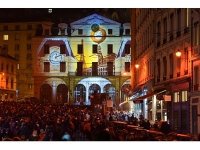Technology
LYON (FRANCE) and THE FESTIVAL OF LIGHTS - Innovation and Imagination
LYON in the Rankings

Georges KEPENEKIAN & Jean-François ZURAWIK (Source: © Ruby BIRD & Yasmina BEDDOU)
USPA NEWS -
Founded by the Romans, with many preserved historical areas, Lyon is the archetype of the heritage city, as recognised by UNESCO. Lyon is a vibrant metropolis which makes the most out of its unique architectural, cultural and gastronomic heritage, its dynamic demographics and economy and its...
Founded by the Romans, with many preserved historical areas, Lyon is the archetype of the heritage city, as recognised by UNESCO. Lyon is a vibrant metropolis which makes the most out of its unique architectural, cultural and gastronomic heritage, its dynamic demographics and economy and its strategic location between Northern and Southern Europe. It is more and more open to the world, with an increasing number of students and international events.
Lyon has a real strengh lying in the diversity of its cultural fabric, where we find side by side prestigious institutions, major international events and a multitude of art schools ans small theaters for new generations. Since the Renaissance, Lyon has been positioned as a city of knowledge and learning. Throughout the year there are numeous international cultural events making the city a lively place to be. These performances, renowned for the artistic excellence of their programming, always give pride of place to young artists, who can use these major events as a launching pas for their careers.... The Festival of Lights is one of them.
The Festival of Lights extends the traditional festival of the 8th December, when the residents of Lyon celebrate the Virgin Mary, whose statue stands on the Fourvière hill, overlooking the city. They put candle lamps on their window sills and balconies and wander the streets of the city.
On the 8 September 1852, as the city was preparing to celebrate the installation of a statue of the Virgin Mary in the Chapel on the Fourvière Hill, the ceremony had to be abandoned as the River Saône was overflowing.
On the 8 September 1852, as the city was preparing to celebrate the installation of a statue of the Virgin Mary in the Chapel on the Fourvière Hill, the ceremony had to be abandoned as the River Saône was overflowing.
The festivities were put back to December 8 of the same year. But the climate did not favour the organisers : a violent storm broke out during the day and the event had to be abandoned. Then seeing the weather improving as night fell, the population spontaneously lit their homes with candles and Bengal lights and hurried down into the street. Since then the ritual has been repeated every year (the people of Lyon decorate their windows and balconies with thousands of little lights), candles protected by little glass shades whose flames wreathe the city in a warm and gentle light, as winter draws near.
Based on this tradition, the Festival of Lights (for four nights around the 8 December) has since become the world´s principal event for creative light displays, showcasing the work of top artists and offering an open-air laboratory for up-and-coming talent. The City of Lyon is at the very forefront of light creation and its technological developments, and every year welcomes the world to its Festival of Lights.
Source : The City of Lyon - The Festival of Lights - Press Trip : December 8-9-10, 2016
Photo Cover: Press Conference at Théâtre des Celestins in Lyon on December 8, 2016
Ruby BIRD
http://www.portfolio.uspa24.com/
Yasmina BEDDOU
http://www.yasmina-beddou.uspa24.com/
Source : The City of Lyon - The Festival of Lights - Press Trip : December 8-9-10, 2016
Photo Cover: Press Conference at Théâtre des Celestins in Lyon on December 8, 2016
Ruby BIRD
http://www.portfolio.uspa24.com/
Yasmina BEDDOU
http://www.yasmina-beddou.uspa24.com/
Ruby Bird Yasmina Beddou Lyon La Part Dieu Confluence Economic Powerhouse Diverse Mobility Innovation Economic Imagination Design Urban Districts Heritage Transformation Innovation Banks Of The Rhone
Liability for this article lies with the author, who also holds the copyright. Editorial content from USPA may be quoted on other websites as long as the quote comprises no more than 5% of the entire text, is marked as such and the source is named (via hyperlink).












